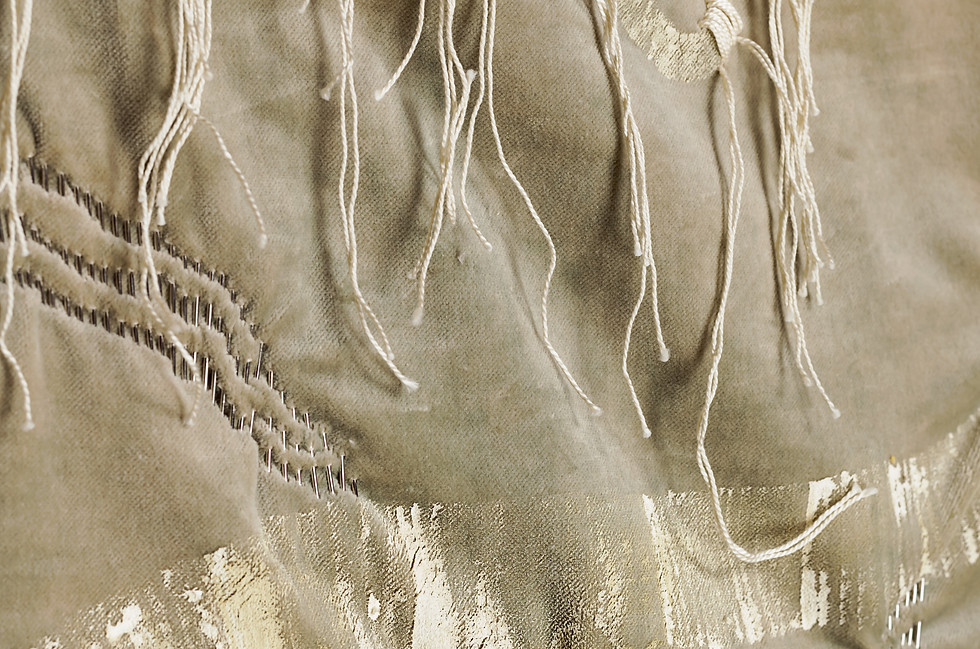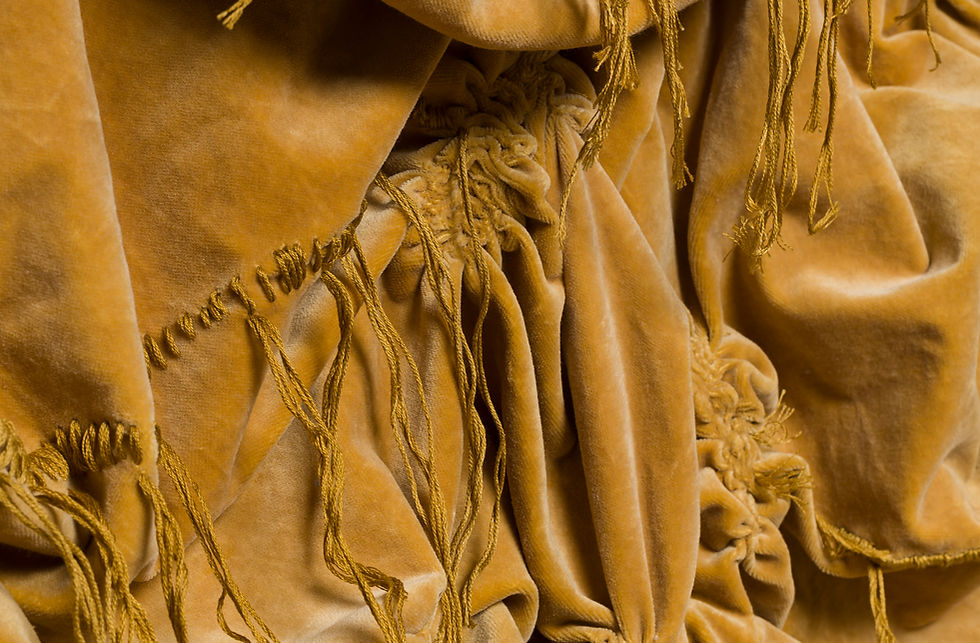
Statement
Mi formación como arquitecta, inicialmente centrada en la geometría y las estructuras formales, fue la base desde la que comencé a explorar el espacio y la forma a través de la pintura. A partir de allí, mi trabajo fue avanzando hacia una mayor flexibilidad, tanto en lo visual como en lo táctil, abriendo paso a la práctica textil como vehículo de expresión; aunque sin dejar de lado otras vías de exploración.
La tela se interviene no solo con franjas rítmicas de pintura, sino también con hilos, agujas y alfileres; herramientas que permiten que lo bidimensional se transforme en un campo de texturas y corporalidades tridimensionales. Las marcas, rasgaduras, cortes y perforaciones —tanto las inherentes a la tela como las que yo realizo— se dejan a la vista de manera consciente, como una decisión que revela el accidente, el error, y la memoria del proceso creativo. Cada huella es tanto una herida como un acto de cicatrización; un rastro visible del tiempo y la acción.
Recientemente, la incorporación del terciopelo ha sumado una nueva dimensión, destacando sus cualidades sensoriales, donde su suavidad dialoga con la dureza de las herramientas que lo modifican. Las arrugas, los pliegues y las marcas de la aguja y el hilo establecen una relación poética entre el tiempo, el tacto y la luz, que se manifiesta a través de la tela.
Así, la textura misma se convierte en un lenguaje visual donde el proceso de creación se despliega lentamente. No se trata sólo de solo marcas físicas, sino de rastros de un tiempo transformado. Cada intervención, cada material, como el terciopelo, agrega una capa más de sentido, testimoniando un proceso donde el tiempo, la acción y la transformación se hacen tangibles.
.jpg)
Statement
My training as an architect, initially focused on geometry and formal structures, was the basis from which I began to explore space and form through painting. From there, my work progressed towards greater flexibility, both visually and tactilely, opening the way to textile practice as a vehicle of expression; although without leaving aside other avenues of exploration.
The fabric is intervened not only with rhythmic stripes of paint, but also with threads, needles and pins; tools that allow the two-dimensional to be transformed into a field of three-dimensional textures and corporalities. The marks, tears, cuts and perforations—both those inherent to the fabric and those that I make—are left consciously visible, as a decision that reveals the accident, the error, and the memory of the creative process. Each mark is both a wound and an act of healing; a visible trace of time and action
.
Recently, the incorporation of velvet has added a new dimension, highlighting its sensorial qualities, where its softness dialogues with the hardness of the tools that modify it. The wrinkles, folds and marks of the needle and thread establish a poetic relationship between time, touch and light, which manifests itself through the fabric.
Thus, the texture itself becomes a visual language where the creation process slowly unfolds. It is not just about physical marks, but traces of a transformed time. Each intervention, each material, like velvet, adds another layer of meaning, testifying to a process where time, action and transformation become tangible.